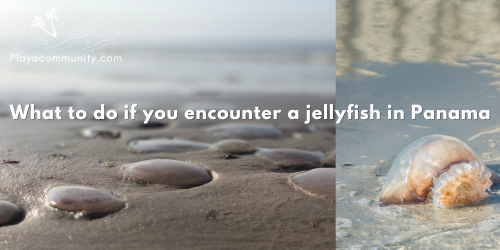What to do if you encounter a Jellyfish in Panama

Did you know that the arrival of jellyfish in the Bay of Panama marks a unique period in the marine ecosystem? This seasonal phenomenon is called upwelling!
Upwelling plays a significant role in the broader ecological dynamics of oceanic ecosystems. The process of cooler waters rising, bringing more life to the surfaces, influences everything from plankton populations to the behavior of ocean species, including several species of medusas.
Jellyfish on Panama’s Pacific Coast typically appear from February until April. Many locals call jellyfish "aguamalas" or "bad water" in Spanish. Water starts to cool in Panama at the beginning of the year, this seasonal process caused by trade winds, affects the Gulf of Panama and the Bay of Panama.
When winds push the surface water away from the coast cold, nutrient-rich water from below rises to the surface. The nutrients now found on the surface promote phytoplankton growth and hydromedusa blooms.
What to do if you get stung by a jellyfish in Panama
Stay calm, swim away from the jellyfish if you can see it. Some ocean organisms are microscopic and you will not be able to see them but still feel a stinging sensation.
If you can’t see the sting, wash the area with clean water. Vinegar can also help stop the burn.
Jellyfish like the box jellyfish are not found in Panama. An encounter with a jellyfish in Panama is not likely to be life-threatening. That being said, if you are stung multiple times, have a severe reaction like trouble breathing, or have a pre-existing condition or allergy seek medical attention.
How to prevent getting stung
The simplest way to avoid a sting is to stay out of the water when you see jellyfish on the shore. When the tide goes out and there are jellyfish around it leaves jellyfish along the shoreline, and there will likely be jellyfish in the water.
Another way to avoid an incident is to ask someone who has been swimming that day or walked the beach. Today there are also creams and suits geared towards divers and surfers to repel jellyfish, but wearing a protective layer like a rash guard leggings can backfire as particles can cling to the fabric or get inside.
